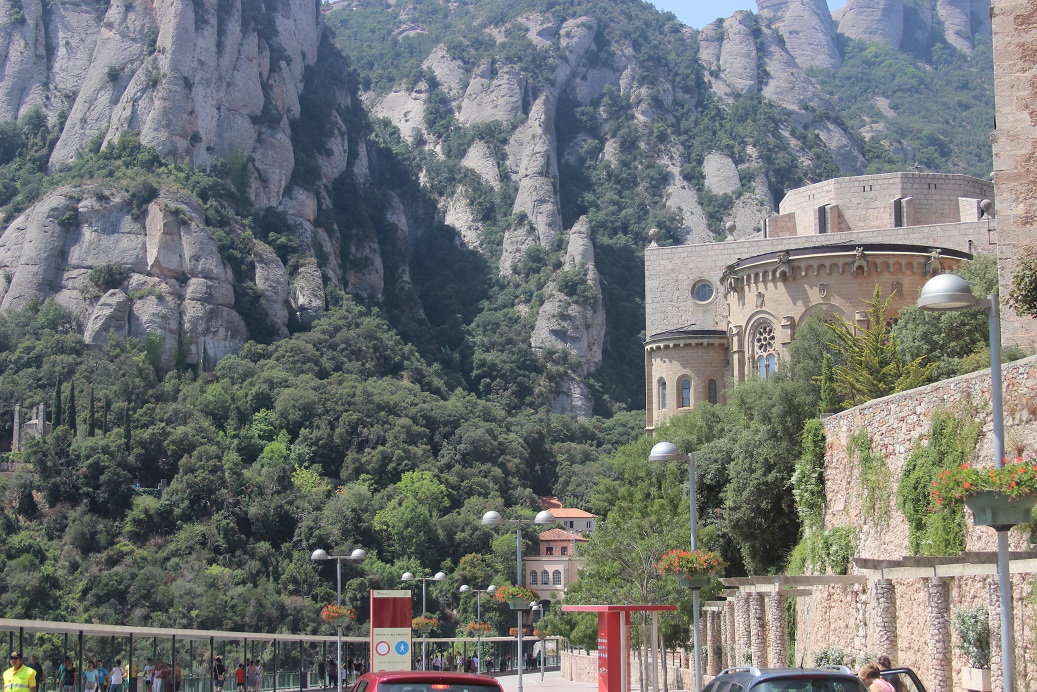
Hi Everyone, I don’t usually blog about my family trips but so many of you have asked to see my pictures that I thought one good way for me to organize might be to just throw them on a blog. So if looking at family vacation pictures isn’t your thing, just skip the blogs labeled “Europe”. They will have nothing to do with Yoga or Ayurveda! I will do one area at a time so this might take me a few months (I am leaving for India in four weeks! Yikes!), but sooner or later I will get all the pictures on here. Thanks to my sister Jackie for editing and adding some bits I had either not caught or just did not remember. Thanks to my son Haden for some of the great pictures.
One of the places that has been on my list of places to visit is Monserrat. When planning vacations I try to use American Airlines miles for my tickets and the only place I could fly into Europe with the miles for five tickets was Barcelona. So I thought this would be a great time to come and see what this monastary was all about.
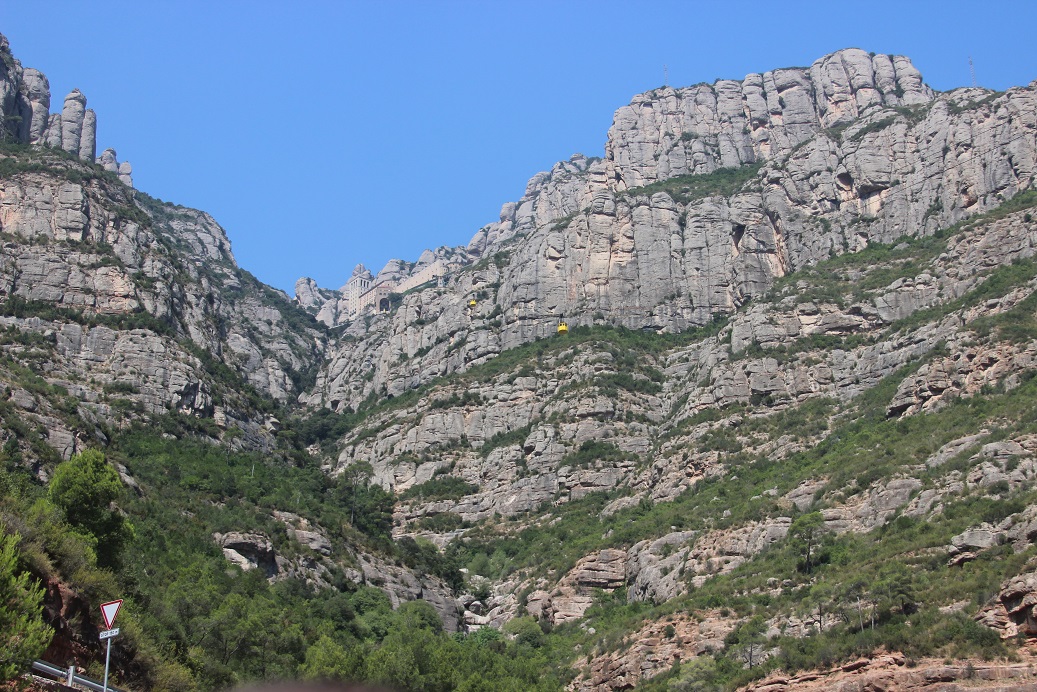
Montserrat is a multi-peaked mountain located near the city of Barcelona, in Catalonia, Spain. It is well known as the site of the Benedictine abbey, Sana Maria de Montserrat, which hosts the Virgin of Montserrat sanctuary and which is identified by some with the location of the Holy Grail in Arthurian myth. If you look really close at this picture, you can see the Monastery embedded into the mountain, just to the right, where the mountain forms a “V”.
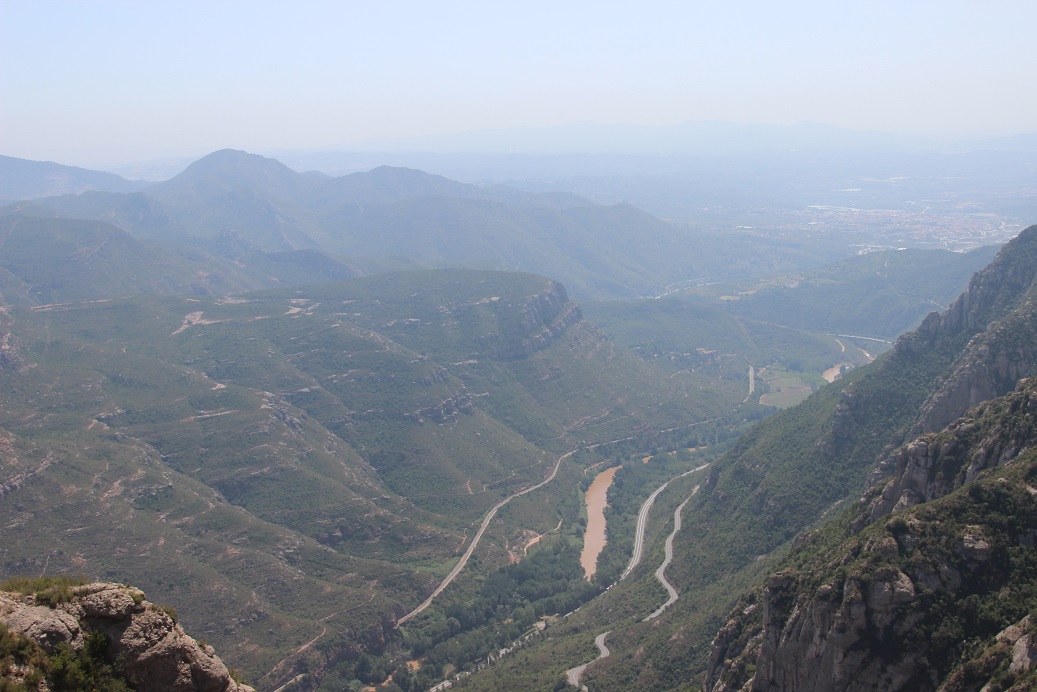
“Montserrat” literally means “saw (serrated, like the common handsaw) mountain” in Catalan. It describes its peculiar aspect with a multitude of rock formations which are visible from a great distance. The mountain is composed of strikingly pink conglomerate, a form of sedimentary rock. Montserrat is Spain’s first National Park. As you can see the view was unbelievable.
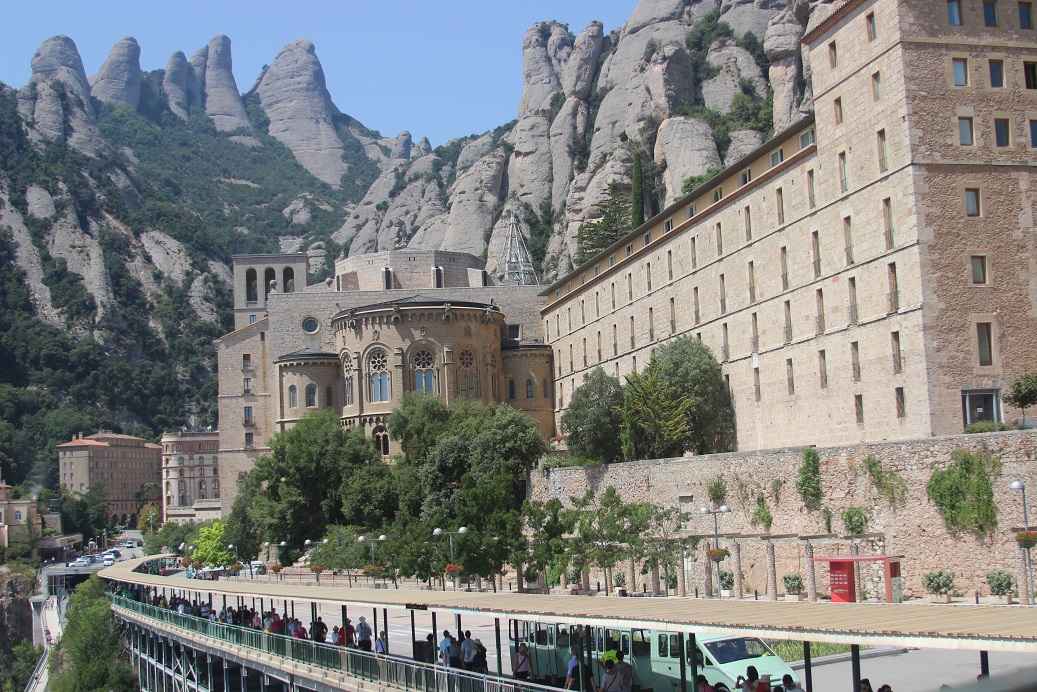
The rugged outline of Mount Montserrat means that the construction of the Sanctuary is not uniform. Its structure is made up of two large blocks of buildings: the Basilica, together with Monastery buildings, and the buildings for tourists and pilgrims. After our driver Tony dropped us off, we walked by some of the local towns-people selling their goat and sheep cheeses and other tasty concoctions.
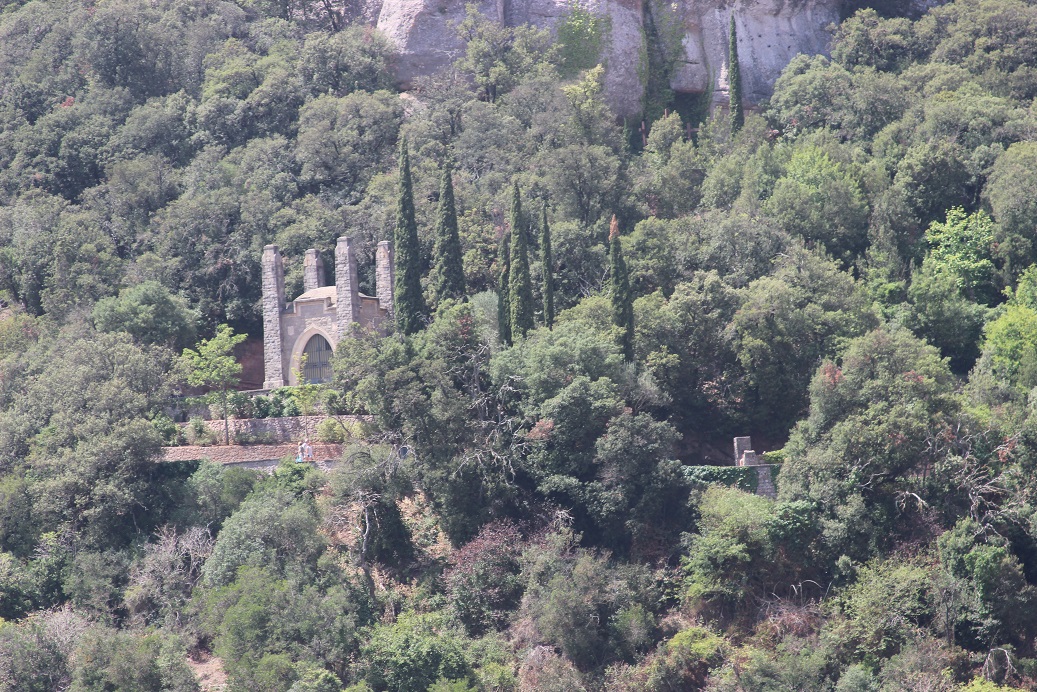
The grounds were just beautiful with many little areas you could walk to and sit, pray or just enjoy the surroundings.
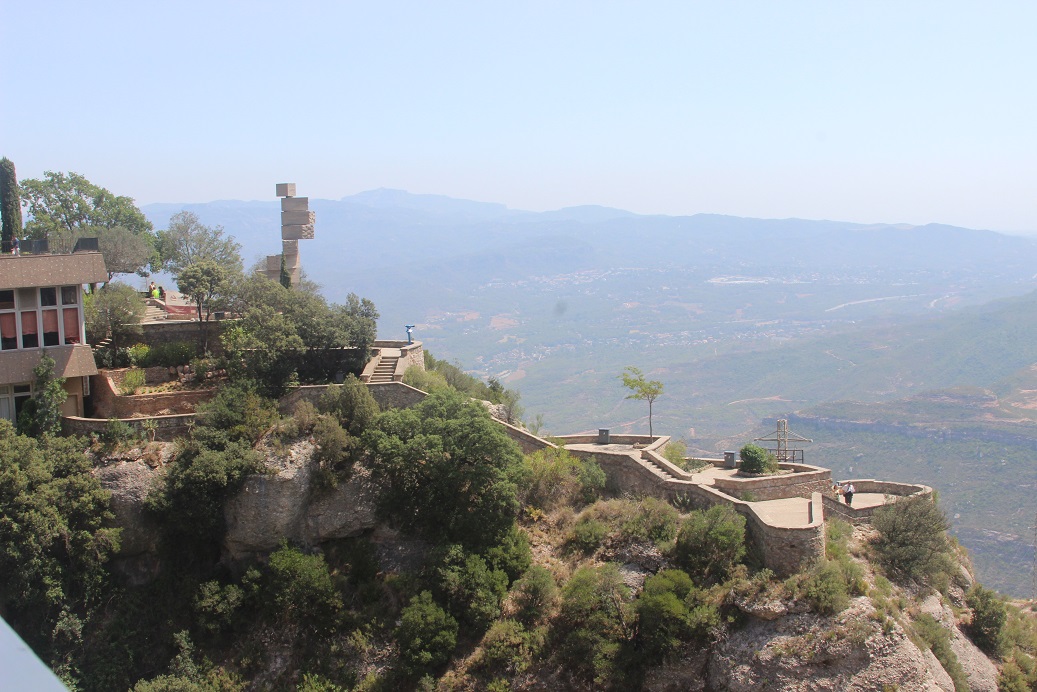
There were really some amazing views of Catalonia from this far up.
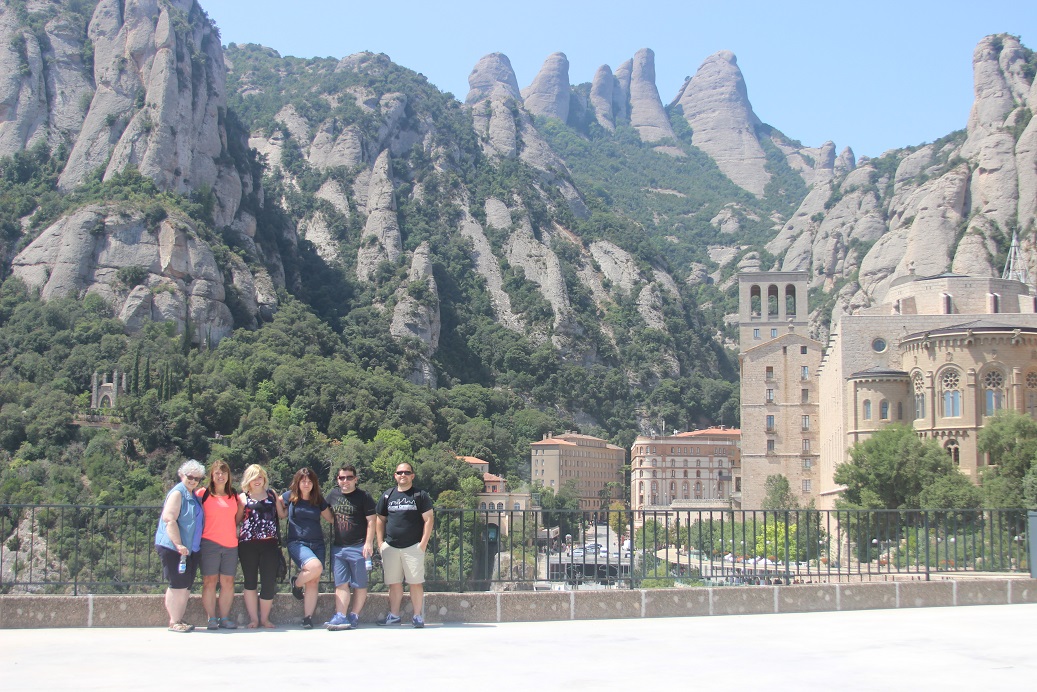
Here my family has posed for a picture, Jackie, my sister; Peggy, my sister-in-law; Hayleigh, me, Haden and Hunter
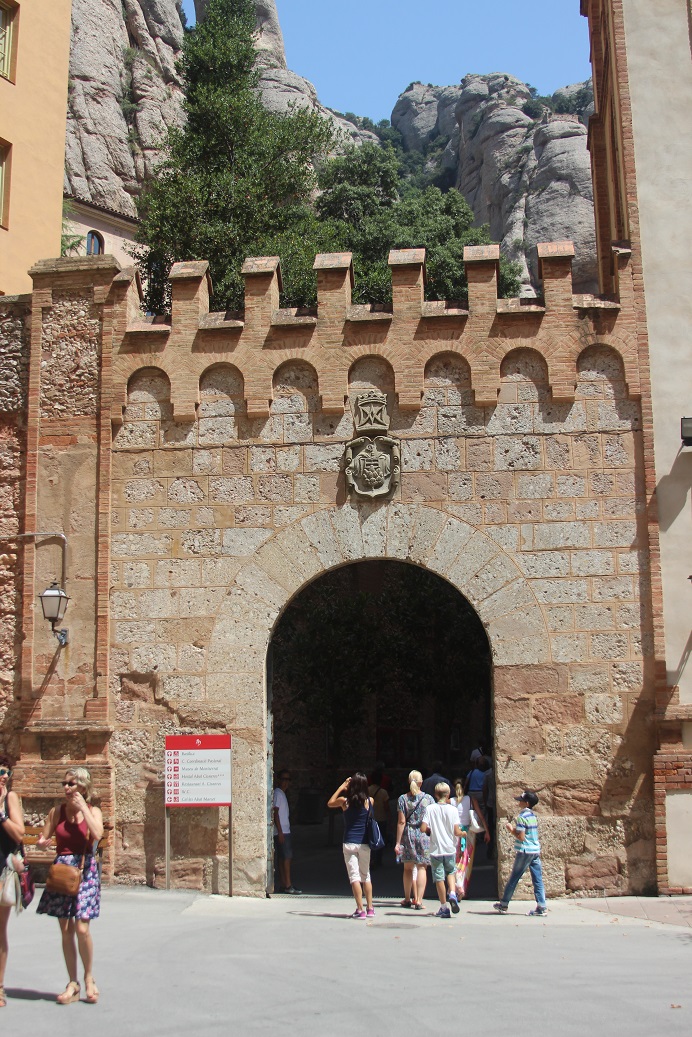
It is not known exactly when Monks first came to Monserrat and began to build a Monastery, but it is believed to have been present on Montserrat Mountain in some form or other since the ninth century. During the ninth century four chapels were built on Montserrat Mountain (St Mary’s, St. Iscle’s, St. Peter’s and St. Martin’s). It is believed that these were inhabited by hermit Monks who lived a solitary life of prayer. The only one of these chapels that is still standing St. Iscle’s and is located in the monastery garden.
In 1025 the Abbot of Ripoli and Bishop of Vic, Oliba, officially founded the Monastery of Montserrat. During the twelfth and thirteenth centuries a Romanesque church was built in Montserrat containing a carving of the image of the Mother of God. Over this period pilgrims began to come to Montserrat.
Throughout the following centuries Montserrat’s importance grew: in 1223 there is the first account of a boys’ choir at Montserrat, in 1409 the Monastery became an independent abbey and in 1490 Montserrat’s printing press was installed. In 1493 the Monastery’s word was spread even further when one of the hermits from Montserrat, Bernal Boil, went on a voyage to America with Christopher Columbus. One of the islands in the Antilles was named after Montserrat and this began the spread of the worship of the Mother of God of Montserrat in the Americas.
There is a boys’ school at Montserrat; the requirement for admission is the ability to sing. The first account of there being a Boy’s Choir at Montserrat dates back to 1223. Around the seventeenth and eighteenth century the music school at Montserrat really began to gain in importance and recognition.
Today there are about 50 boys in the Boy’s Choir at Montserrat. They are also educated in other areas of academia whilst they are schooled at Montserrat. Not only do they perform in Montserrat, they have also given concerts in several countries around the world. They have recorded over 100 albums (see below for how to buy the albums).
They still believe that their most importance task is singing daily in Montserrat Monastery’s basilica. They sing counterpoint and Gregorian chanting – their most famous form of expression which is a type of singing typical to masses in Western Christianity.
In the 18th century Montserrat hit some troubling times. In 1811-1812 Montserrat was destroyed by Napoleon’s army. Then in 1835 the Land Acts meant that the Monastery lost all its property and all but one Monk left the Monastery. However, in 1844 the Monks returned to Montserrat and in 1858 the reconstruction of Montserrat began.
Again in the nineteenth century, the Monks experienced turbulent times during the Spanish Civil War (1936-1939). During this period the monks were forced to leave the monastery. During the war 23 monks were killed. Fortunately, the autonomous government of Catalonia managed to save Montserrat and free it from looting and destruction. After the war the Monks returned and continued with the reconstruction of the Monastery.
In 1947 there was the Celebration of the Enthronement of the Image of the Mother of God (The Black Madonna). The Black Madonna is so named because the wood from which it is carved has aged over time and is now a dark ebony-like color.
Since this time the Monastery has grown in strength. The new museum has been added, in 1982 Pope John Paul II visited Montserrat, the Basilica has been restored and the entire complex has been built to cater to the large number of pilgrims who come to Montserrat each year.
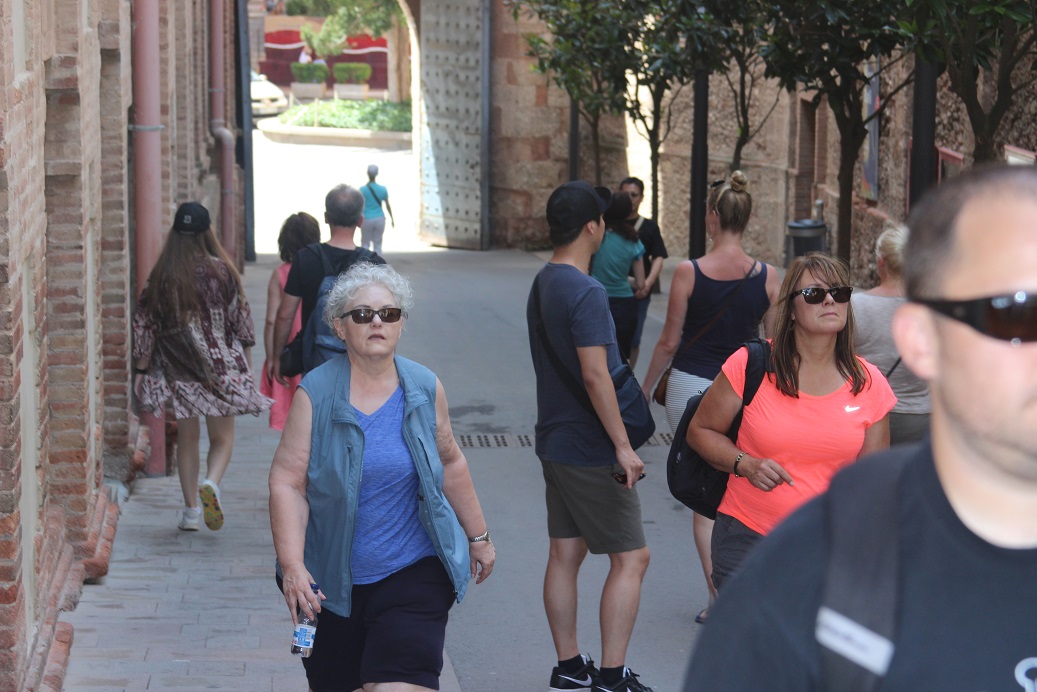
Once we walked through the huge gates, it was a short trek uphill.
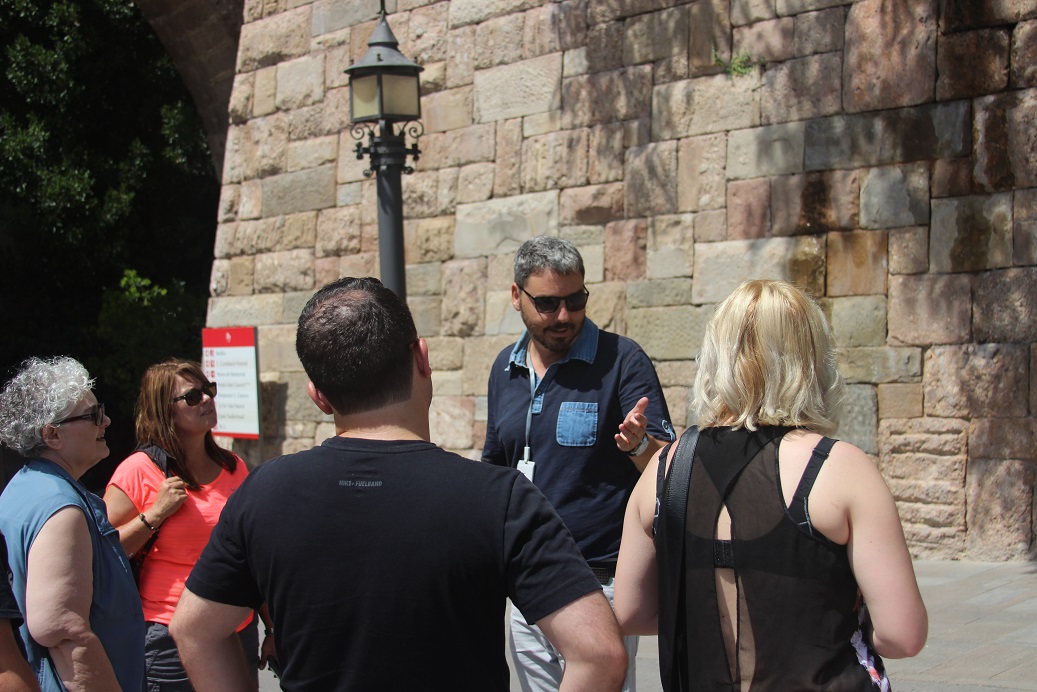
Our guide from Barcelona, Jose Soler, was very familiar with this Monastery and gave us great information about its history and pieces of artwork.
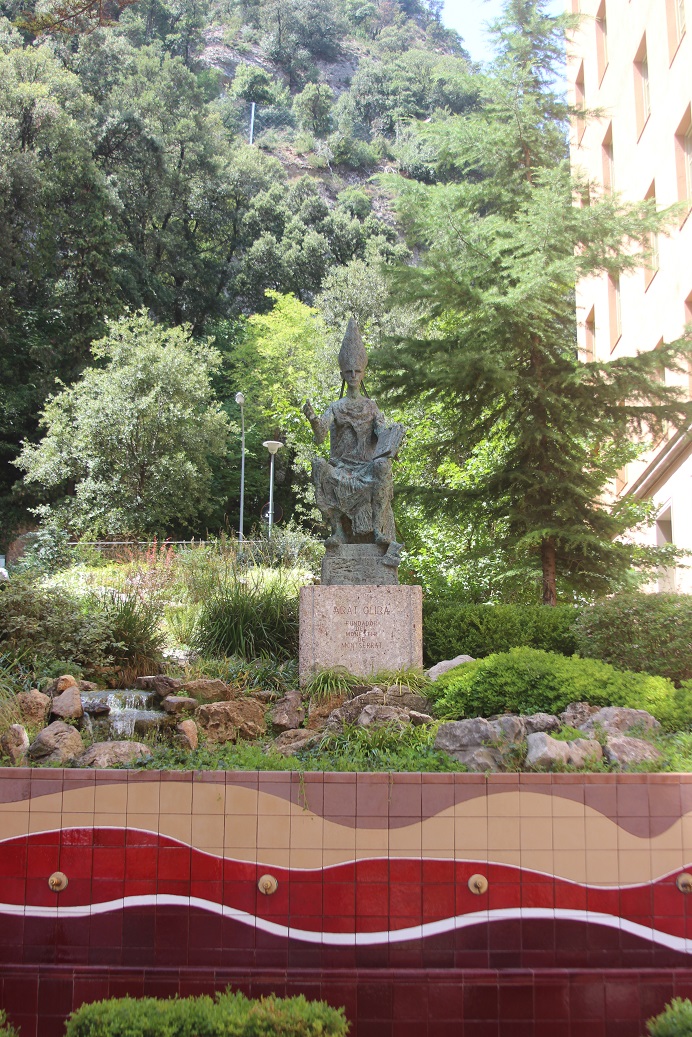
This is a statue of Abat Oliba, the founder of the Monastery of Montserrat.
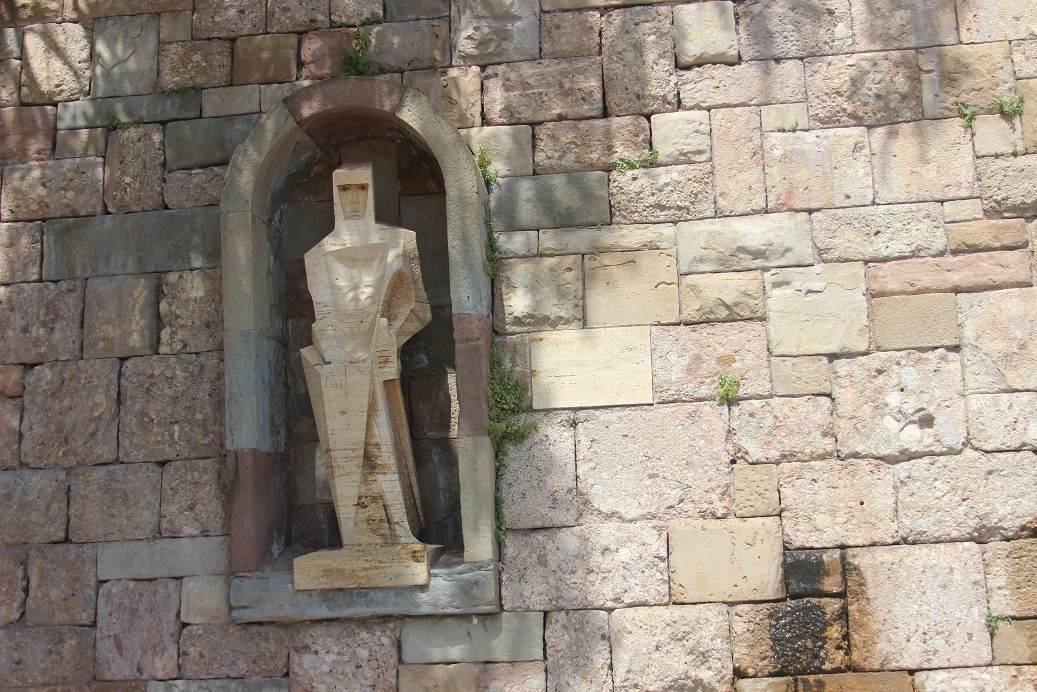
This sculpture was done by Josep Maria Subirachs i Sitjar (11 March 1927 – 7 April 2014). Subirachs was a Spanish sculptor and painter of the late 20th century. His best known work is probably the Passion Facade of the basilica of the Sagrada Família in Barcelona. He was controversial, as he did not make any concessions to the style of the architect who designed the building, Antoni Gaudí. The next blog will be on Barcelona and I have some pictures of Subirachs work at the basilica I can share with you.
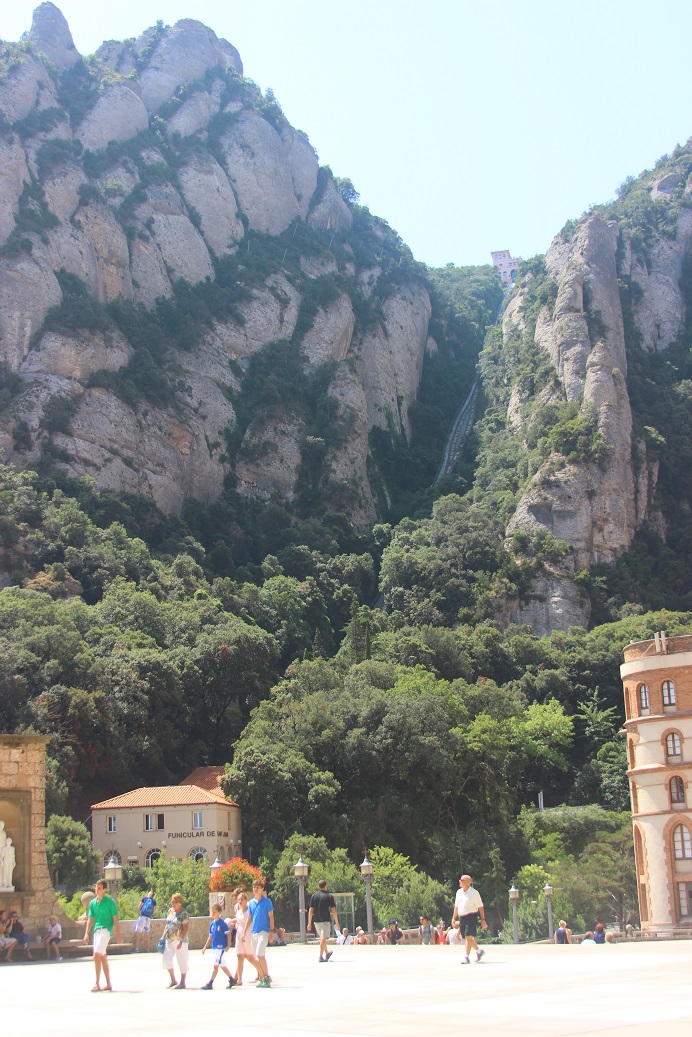
As we walked further up into the main courtyard, I just happened to turn around and saw this crazy mountain view. If you look between these mountains you will see a “lift” that literally was going straight up. You could also hike up this same route.
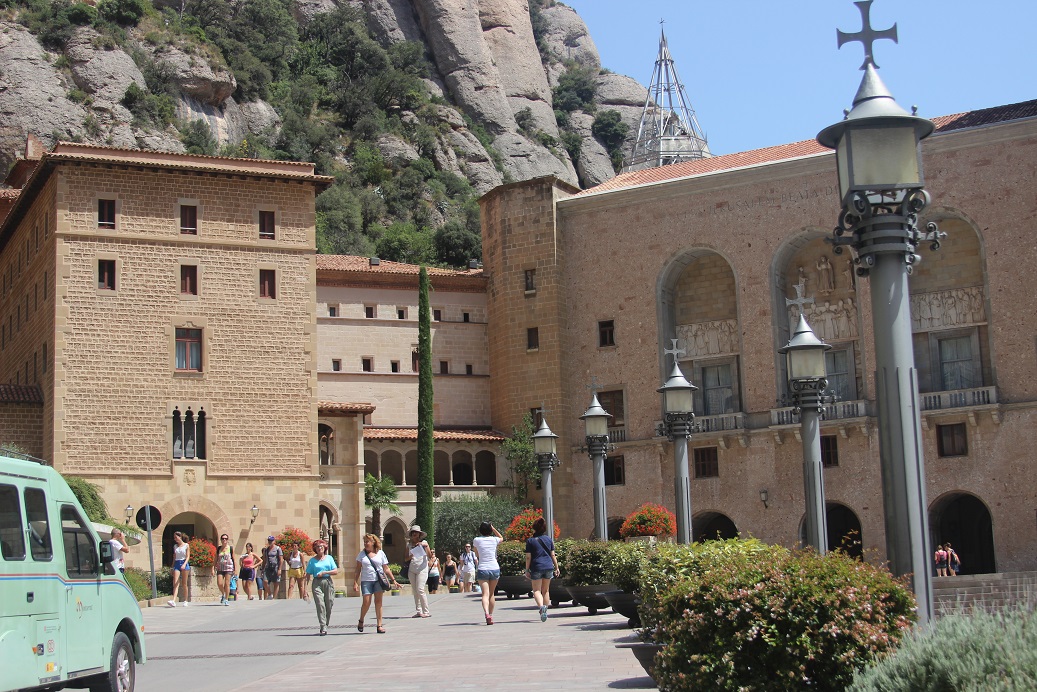
Inside the gates, you have access to the hotel and other living quarters (yes you can spend the night here). These “streetlights” were so lovely with the crosses on top.
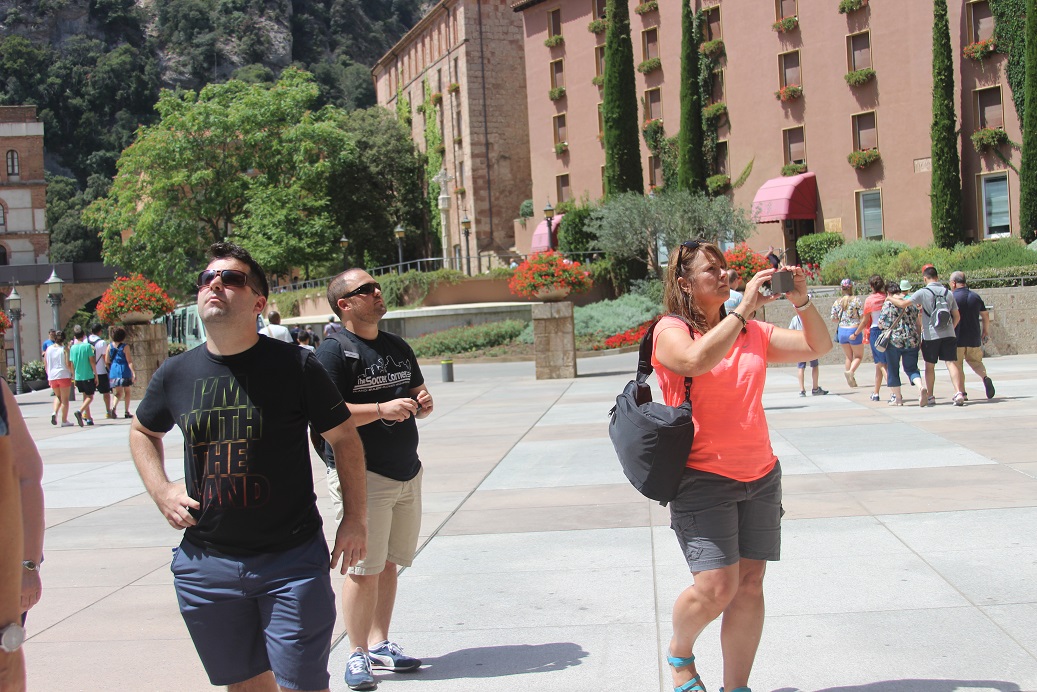
More of the courtyard entrance, as you can see from our faces, rather awe inspiring!
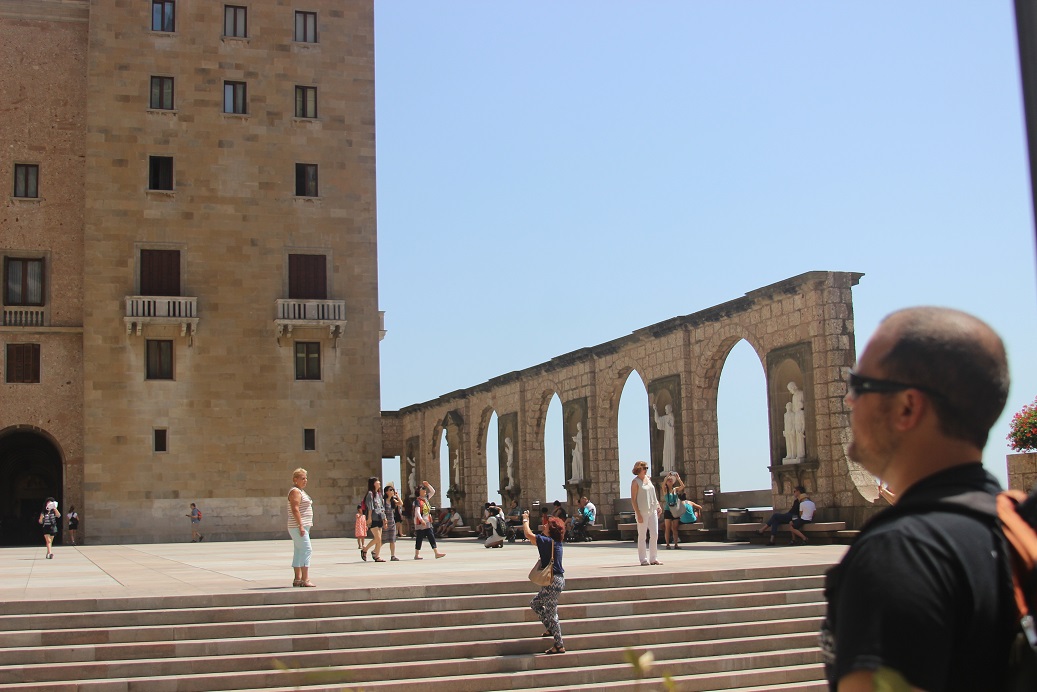
Looking through these archways you could literally see for miles over Catalonia.
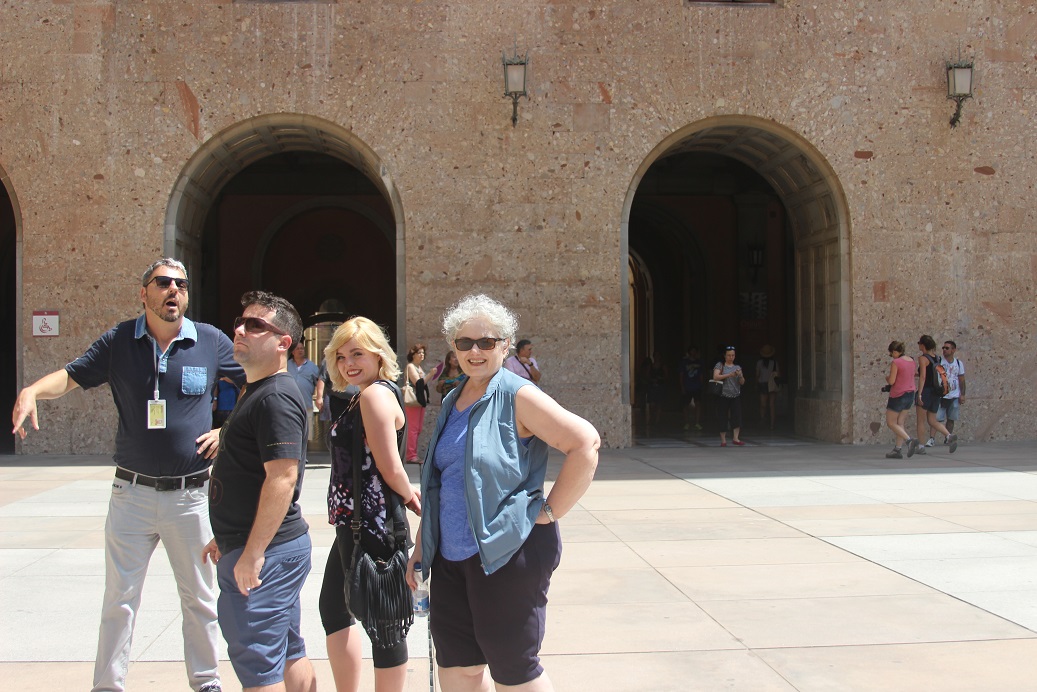
I had to include this picture, Jose being so “passionate”, Haden so “intrigued”, and Hayleigh and Jackie posing!
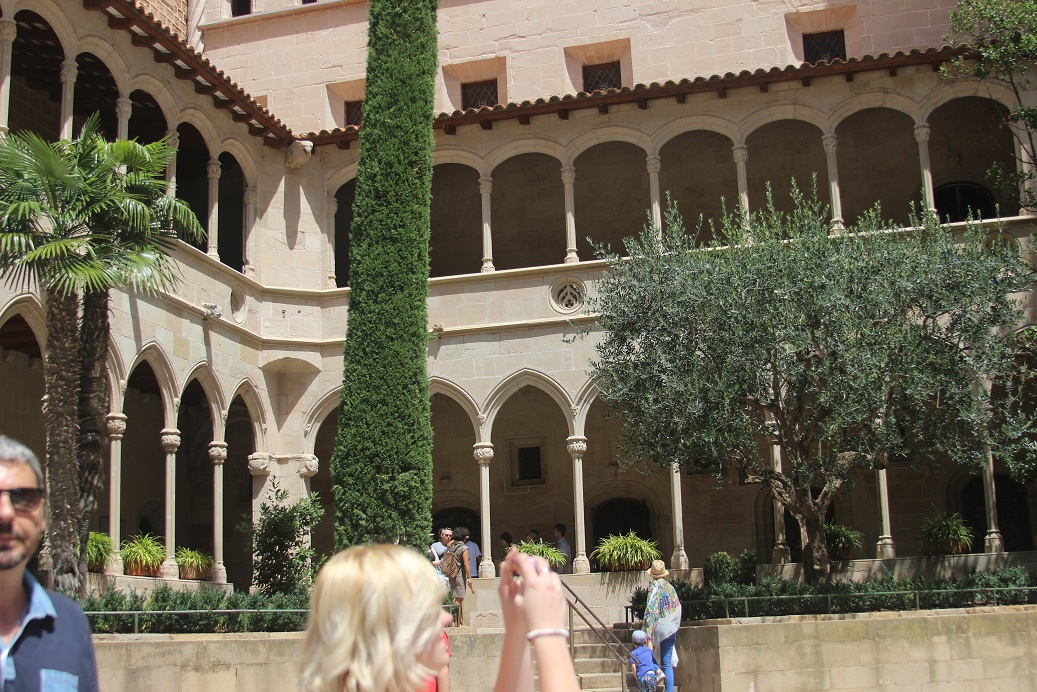
During the rebuild, they used these arches which were one of the few remnants from the previous structure. Old architecture mixed with new, just so pretty.
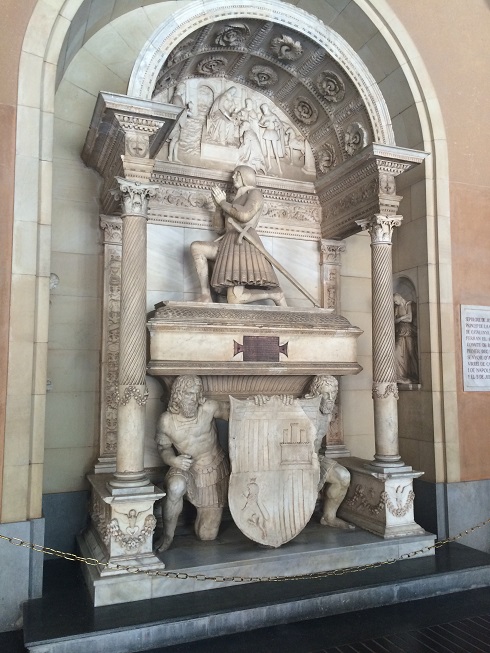
Before entering the Basilica, the courtyard had some interesting features. This is the Renaissance tomb of John of Aragon. To the right is the tomb of Bernat de Vilamari.

The front of the Basilica, so interesting how it is not freestanding, but attached to other buildings.
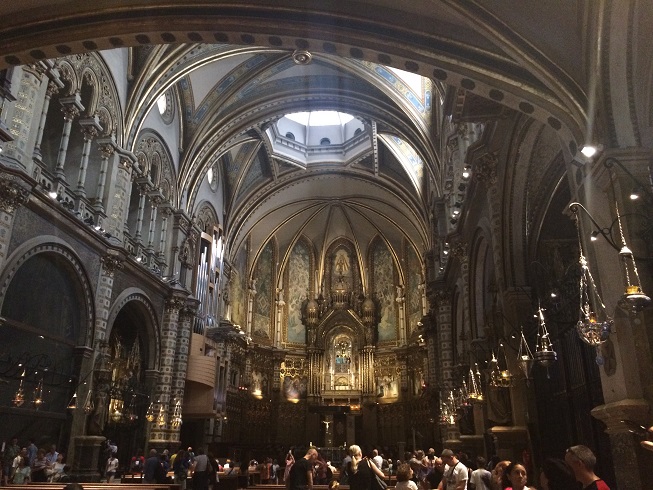
Breathtaking first look. All silver and gold.

The Mother of God (the Black Madonna). Saint Ignatius of Loyola visited Montserrat after he recovered from an illness and laid down his military equipment in front of the statue. He went on to a period of asceticism eventually founded the order that became known as the Jesuits.
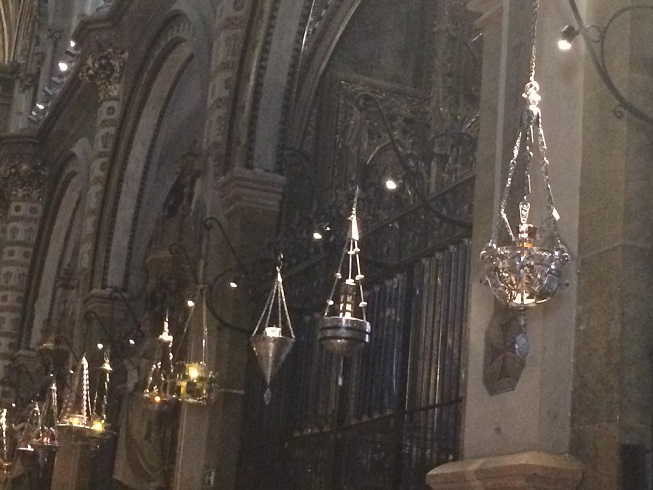
These wonderful chandeliers hung down both sides from the front to the back of the chapel. Each one different, each one breath-taking.
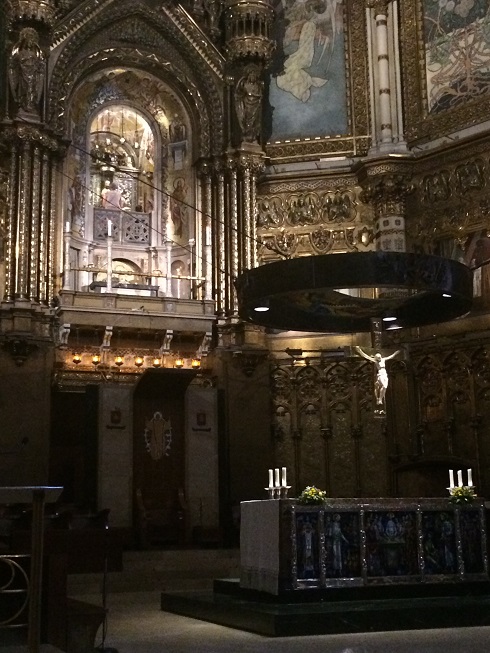
The alter.
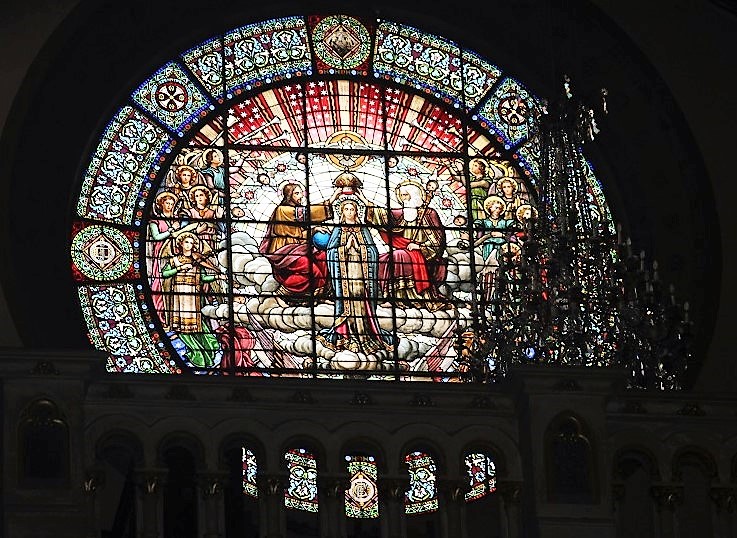
One of the only good pictures I got of stained glass on this trip. This was to the back of the chapel.
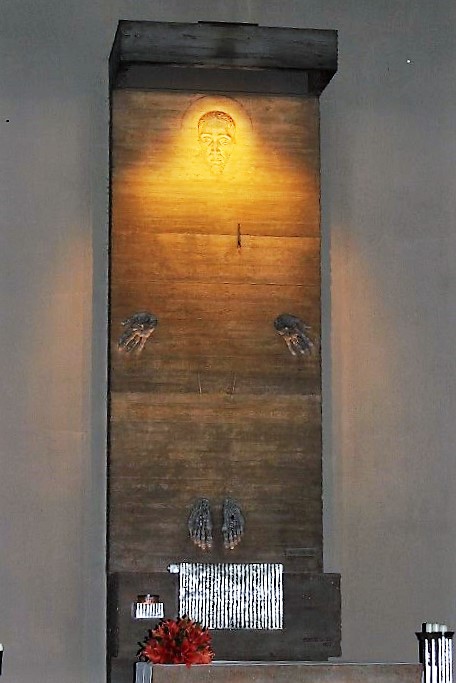
This is another piece by Subirachs. One of the most interesting depictions of Christ that I have ever seen.
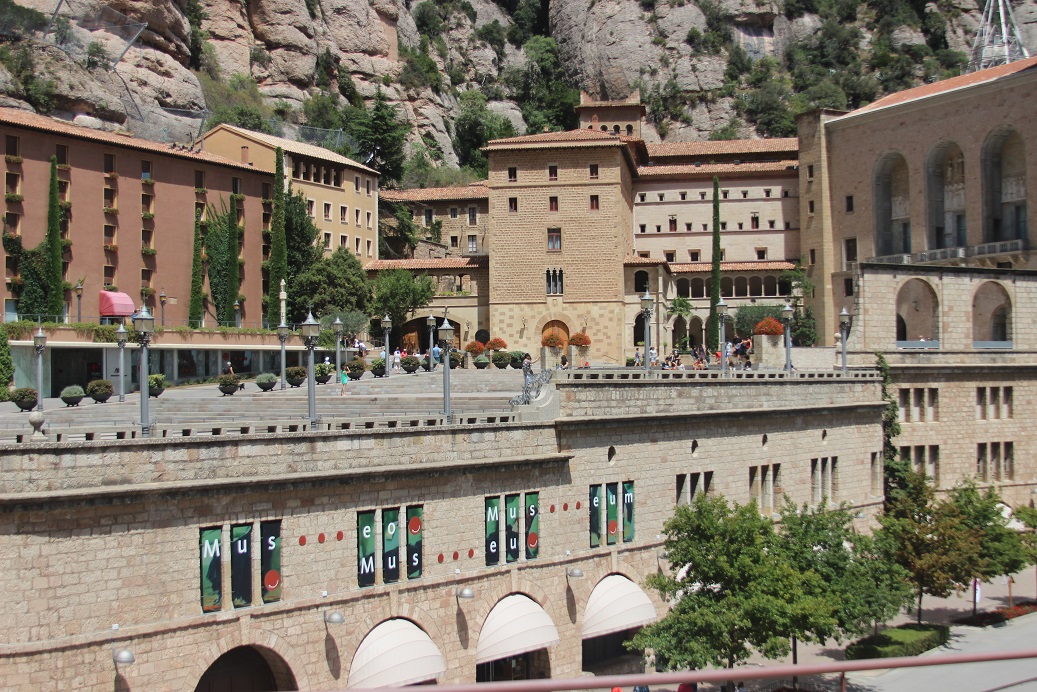
Our last shot as we were leaving to go back to Barcelona. Oh I forgot to mention that Hunter, Haden and Peggy did a little “liquor tasting” from the liquors made by the Monks.
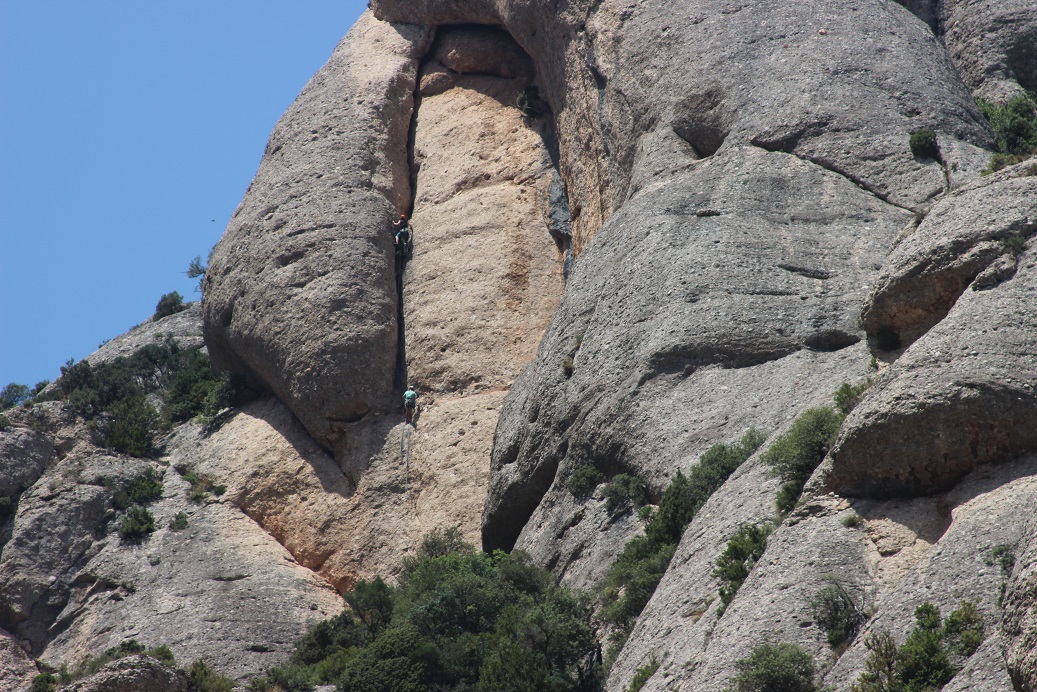
Not only can you hike at Monserrat, you can rock climb. These climbers were way up there and I had to zoom in to take this shot.
Thanks for reading, I hoped you enjoyed my pictures.
